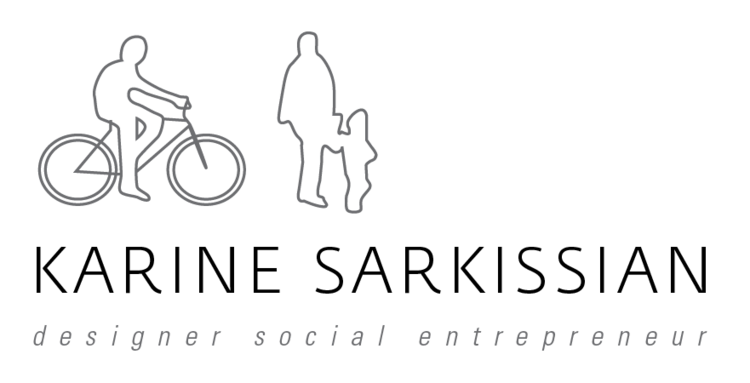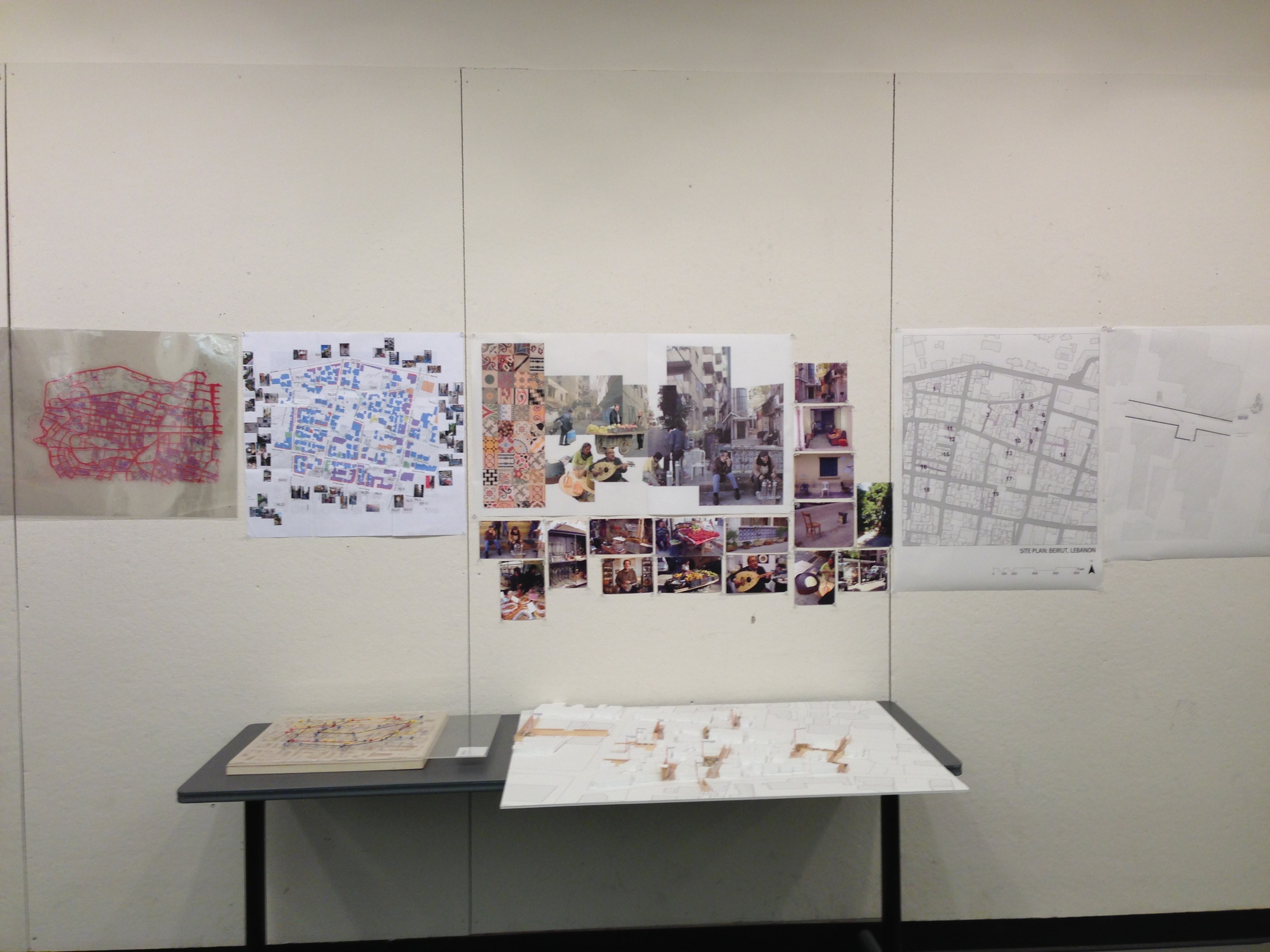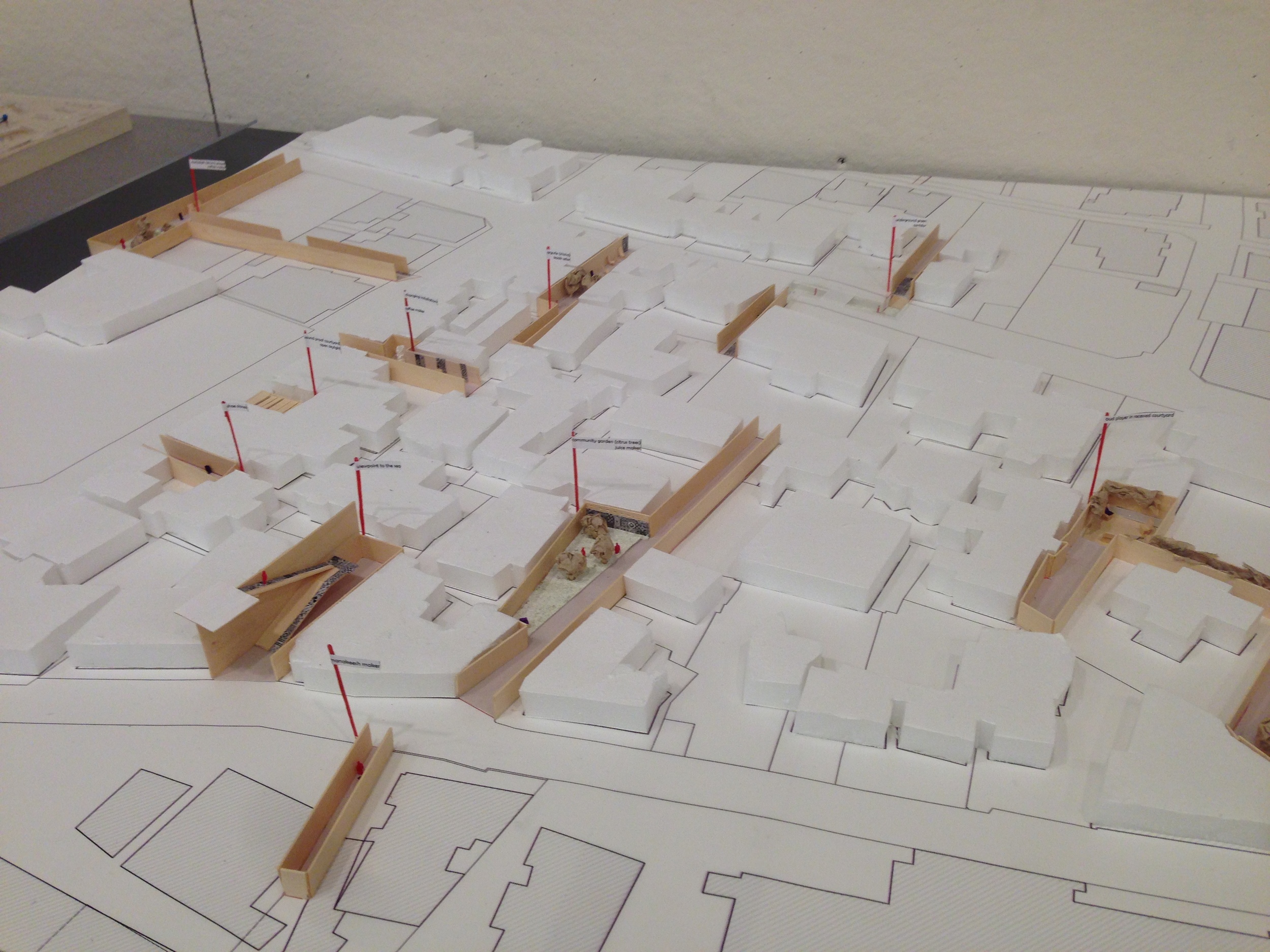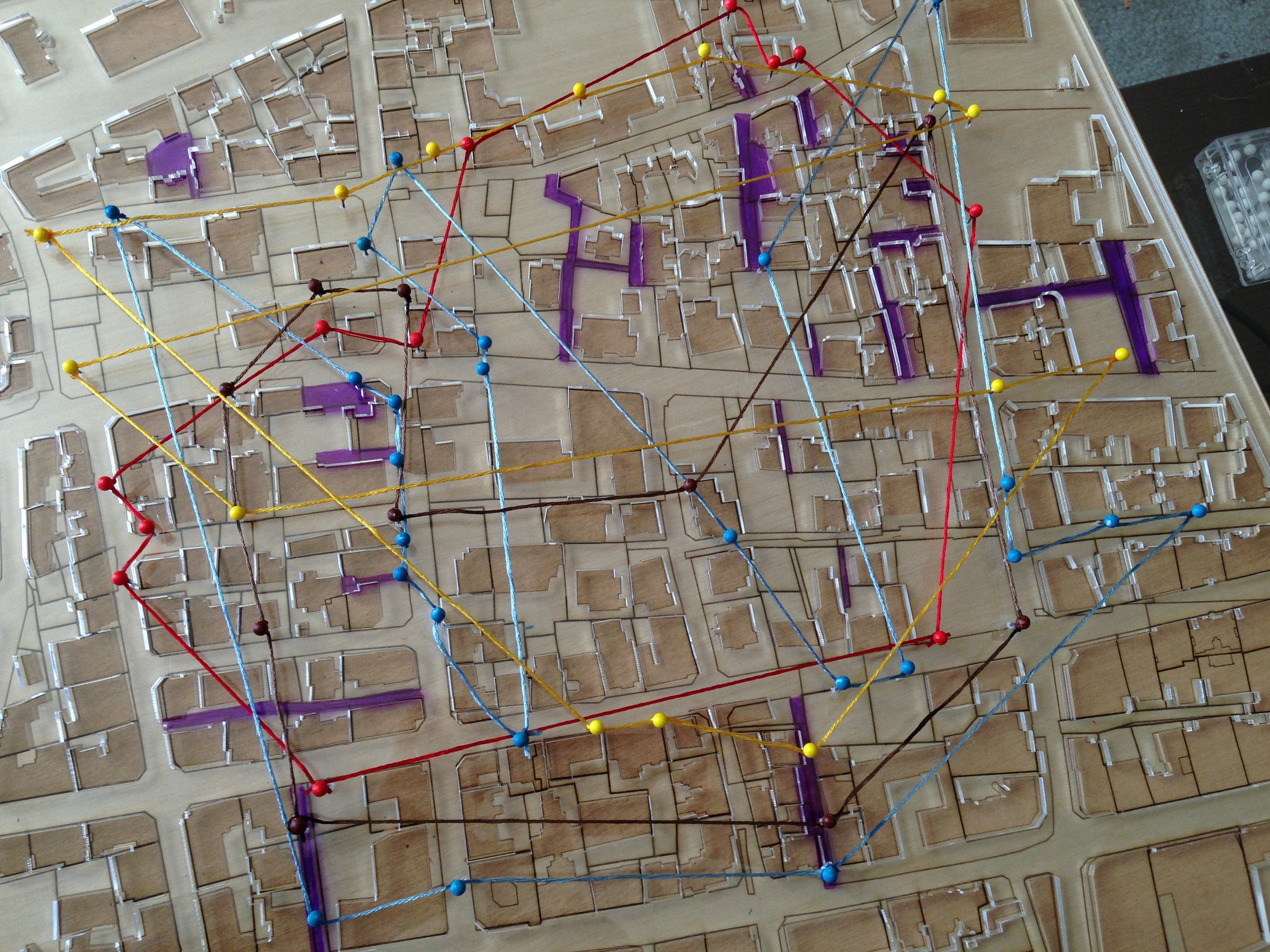Thesis Process
I remember the day. How I remember walking along Hamra street, my mother holding my hand and my older sister following a couple of steps behind too busy day dreaming. Wonderful distractions seemed to occupy my mind, distractions from the streets and my imagination created a world of its own, a Beirut so alive and vibrant. Everyone around me had a story, the shoeshine, the lines on his face personified his long life full of acquaintances, adventures, and stories; the ka’ak salesman, wheeling his cart around the streets allowing the wonderful smells of his fresh bread to overwhelm our senses… So many people would come off the tram to spend the afternoon shopping at Red-shoe, and stop for coffee at Modca Cafe. These distinct memories, smells, and sounds have left imprints in my mind that I will never forget.
Walking around was always how our afternoons took off, we would go see my aunt and cousins and play around while our parents gossiped about the neighborhood over coffee and an arguile. My cousin Leila and I would always go downstairs in the Hayy, it was were the life of the neighborhood really took place. A courtyard space came about, created by the buildings that surrounded it. It served as a playing ground where we would run around, tell each other our stories, and get to meet our neighbors. Our parents felt safe with us being there, they could keep an eye on us, and eventually would join us shortly after. People of all ages, from all around would come together. There was always something so unique, and we had even made the area homier with plants and outdoor furniture for everyone to enjoy. Harmony and togetherness, two words that I long for quickly disappeared with the arrival of an almost endless war.
Today, these spaces, victims of a fifteen-year war, have lost their purpose and disappeared. They are neglected as though inexistent. Why have we destroyed all areas we lived in? Our outdoors and public spaces are no more, and we are lost with everything that has happened. Amnesia has taken over. What worries me most however is that my children, their friends, and the youth of today have never experienced our urban playground, our Beirut. I long for this legacy to be passed on. How can we tell our stories and our memories? How can the youth of today understand and see what is no longer there? How can they create their own?
Walking around Beirut for the last month, my perceptions seemed to have changed quite a bit. Signs and interactions I was least expecting caught my attention most deeply. I realized that my interactions with people were the elements I gravitated to most. Meeting the shoeshines, the coffee makers, vegetable sellers, kaak sellers, the manakeesh makers, and even the neighbors were all substantial moments in my venture.
All spaces in the city are supposed to serve the people and yet so many of them seem to neglect them (rather focus on the buildings)—they are loosing form. In effect, my designs of the Hayy spaces are to be devoted to the people, the people that represent and emphasize culture. Creating these spaces to convey the Lebanese legacy (past to present) and culture.
WHAT IS CULTURE anyway? (how/ what is worth salvaging and protecting?)
Culture takes form in these unique aspects and interactions with old techniques and traditions associated to today’s customs.
By celebrating the people, we allow aspects of culture and past to blend with present to encourage these customs (that are vital to Lebanon) to be prolonged in the future. The connection between them and creating these PEDESTRIAN EXPERIENCES through design that responds to elements of our senses is one that is plausible, justified, and strong to explore.
EXPERIMENTAL PEDESTRIAN EXPERIENCES to connect with the individuals/people (that are so valuable to Lebanese culture) to link past and present through a response to senses around each Hayy area.
These are not painful memories to salvage, but rather represent trajectory of culture and life, somewhat the bread and butter of Lebanese society. It is valuable to provide structure and stability of things that remain (and that are predominantly important).
This project will employ design strategies that bring awareness to the current moment. When people are in the moment and engaged with their senses, their minds are not running off to negative connotations of memory.
All works © Karine Sarkissian 2013.
Please do not reproduce without the expressed written consent of Karine Sarkissian.



